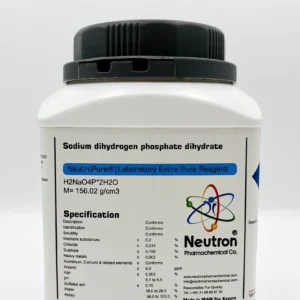Ethylene glycol
| Formula: | C2H6O2 |
| Chemical formula: | HOCH2CH2OH |
| Density: | 1.11 g/cm3 (20°C) |
| Molar mass: | 62.07 g/mol |
| CAS number: | 107-21-1 |
| EC index number: | 603-027-00-1 |
| HS code: | 29053100 |
| EC number: | 203-473-3 |
| Storage (temperature): | Without limitations. |
| SDS | available |
| R phrase: | R 22 |
| Odour: | almost odourless |
| Form: | liquid |
| Color: | colourless |
| Explosion limit: | 3.2 -15.3 Vol % |
| Ignition temperature: | 410 °C (DIN 51794) |
| PH value: | 6 – 7.5 °C (100 g/l 20°C) |
| Solubility in water: | 1000 g/l (20 °C) |
| Solubility in ethanol: | freely soluble |
| Flash point: | 111 °C (c.c.) |
| Boiling point: | -13 °C |
| Melting point: | -83 °C |
| Vapour pressure: | 0.053 hPa (20 °C) |
| Thermal decomposition: | > 200 – 250 °C |
| Viscosity dynamical: | 21 mPa*s (20 °C) |
| Saturation concentration | 0.15 g/m3 (20 °C) |
| Assay | ≥ | 99.0 | % |
| Solubility | Conforms | ||
| Description | Conforms | ||
| Identification | Conforms | ||
| Acidity | ≤ | 0.01 | % |
| Specific gravity | ~ | 1.110 | g/cm3 |
| Chloride | ≤ | 5.0 | ppm |
| Boiling Range | 194 – 200 | °C | |
| Water | ≤ | 0.2 | % |
| Residue on ignition | ≤ | 0.005 | % |
Ethylene glycol is an organic compound with the formula C₂H₆O₂. It is a colorless, odorless, sweet-tasting, viscous liquid primarily used as an antifreeze agent and in the manufacture of polyester fibers.
🏭⚗️ Production
Ethylene glycol is industrially produced from ethylene via ethylene oxide, which is hydrolyzed to give ethylene glycol. This process is carried out on a large scale using catalysts to increase yield and selectivity.
🔬 Properties
Ethylene glycol is a hygroscopic, colorless, odorless, and sweet-tasting viscous liquid. It has a melting point of -12.9 °C and a boiling point of 197.3 °C. It is miscible with water in all proportions and is toxic if ingested in large amounts. Its chemical structure contains two hydroxyl groups which contribute to its physical and chemical properties.
🧪 Applications
• Used primarily as an antifreeze and coolant in automotive engines.
• Used as a raw material in the manufacture of polyester fibers and resins.
• Employed in the production of plastics, films, and solvents.
• Also used in hydraulic fluids and as a de-icing agent.






